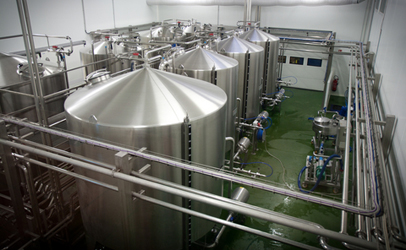
When Louis Pasteur developed and patented the process of pasteurization in the 1860s, it had nothing to do with milk. He was more concerned with keeping beer from spoiling.
But, by the turn of the century, this method of preservation had been adapted to address common water- and milk-borne diseases such as tuberculosis, diphtheria, severe streptococcal infections, typhoid fever and other foodborne illnesses.
Pasteurizing milk became routine in the U.S. starting in the 1920s. Today, a number of other products on grocery store shelves, including eggs and juices, are also pasteurized.
While pasteurization doesn’t kill all the microorganisms in our food, it does greatly reduce the number of pathogens so that they are unlikely to cause disease. And, like with Pasteur’s beer, it reduces spoilage organisms, extending our food’s “shelf life.”
The method of pasteurization simply involves heating food (usually a liquid) to a specific temperature for a certain length of time and then immediately cooling it. Manufacturers use various time-temperature combinations when treating their products.
“Vat pasteurization” means milk is heated to 63 degrees Celsius for 30 minutes, but “your normal pasteurization is probably going to be for 15 seconds at 72 degrees [Celsius],” says Michele Jay-Russell, a veterinarian and food safety specialist at the Western Institute for Food Safety and Security at University of California, Davis. This is called “high-temperature short-time” (HTST) processing, or flashpasteurization.
At the most extreme, there’s “ultra pasteurization,” which could involve heating to 138 degrees C for 2 seconds. This variation sterilizes food and allows for products to be on shelves instead of the refrigerated section of the grocery store (think boxed milk).
The specific temperatures allotted for pasteurization are based on the ability to kill the most heat-resistant of pathogens, Jay-Russell says. Campylobacter will die pretty quickly at 72 degrees C, she says, but processors need higher temperatures to kill Q fever.
“If you can kill that off, you’ve killed off everything else,” Jay-Russell adds.
Of course, pasteurization is in the news these days because of the debate about raw milk.
The market is growing of consumers seeking unprocessed foods or those wanting to support small farms. And advocates of raw milk defend it for a number of reasons, particularly arguing that pasteurization reduces the nutritional and health benefits of milk.
But, without pasteurization, E. coli, Campylobcater and Salmonella can be much more prevalent in the milk. According to the Centers for Disease Control and Prevention (CDC), there were 148 outbreaks due to consumption of raw milk or raw milk products reported between 1998 and 2011. Among the victims, there were 2,384 illnesses, 284 hospitalizations and two deaths.
Milk is a real breeding ground for pathogens, Jay-Russell says.
“If you get Salmonella or E. coli on a lettuce leaf, it’s not a happy environment for that bacteria. If you put just a couple of cells into raw milk, it’s like a culture medium,” she says.
Because raw milk can be particularly dangerous for young children whose immune systems are especially susceptible to infection, the American Academy of Pediatrics (AAP) issued a policy statement in December stating that pregnant women, infants and children should only consume pasteurized milk and milk products.
The health benefits that proponents say are removed by pasteurization “have not been clearly demonstrated in evidence-based studies and, therefore, do not outweigh the risks of raw milk consumption,” the AAP said. “Substantial data suggest that pasteurized milk confers equivalent health benefits compared with raw milk, without the additional risk of bacterial infections.”
“You have to take steps to keep the risk as minimal as possible,”Jay-Russell says.





